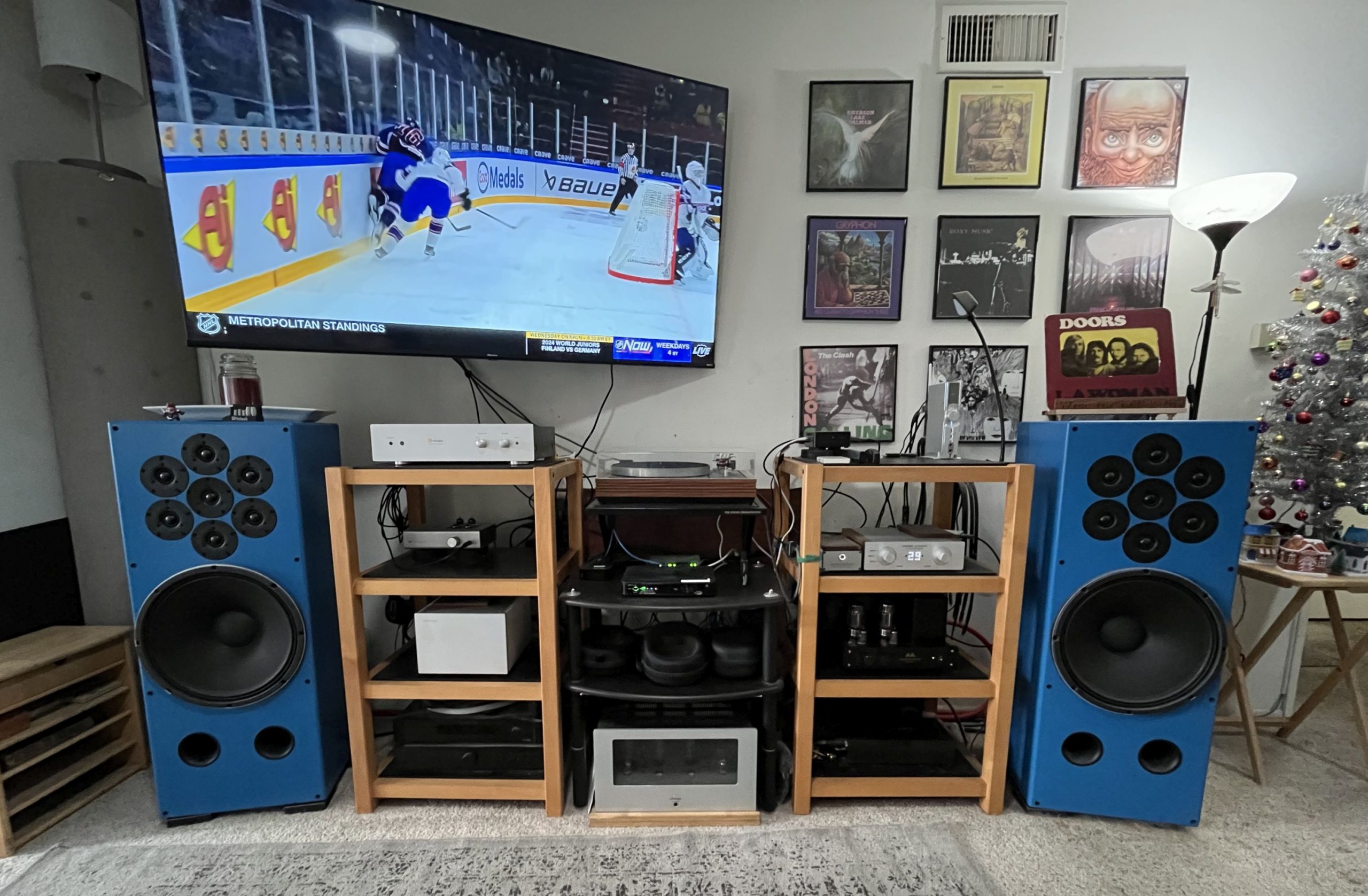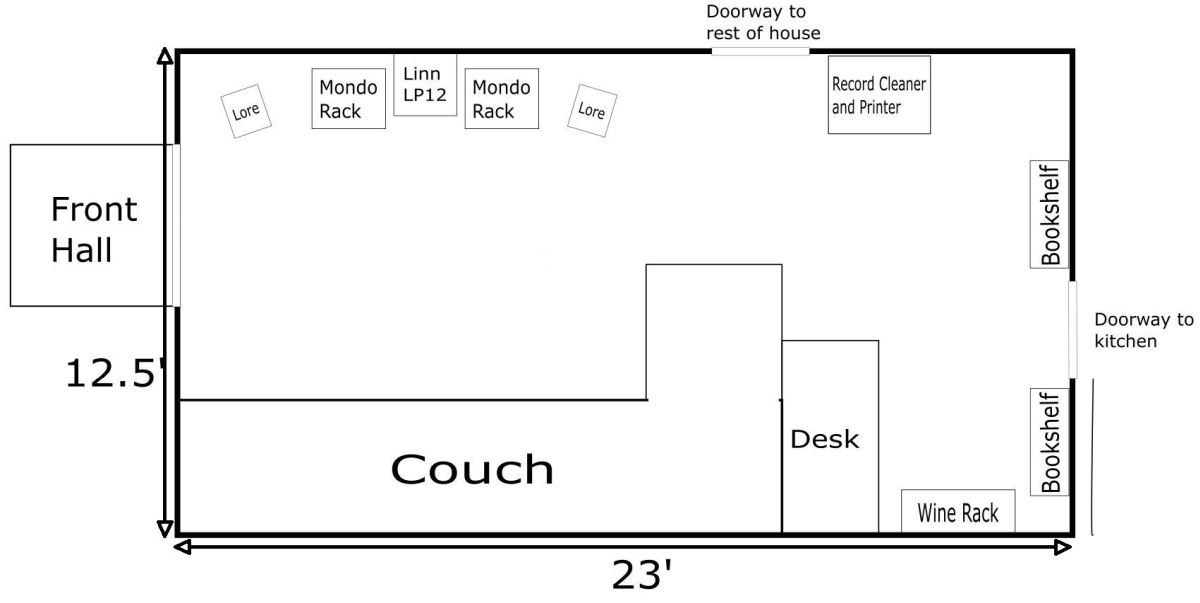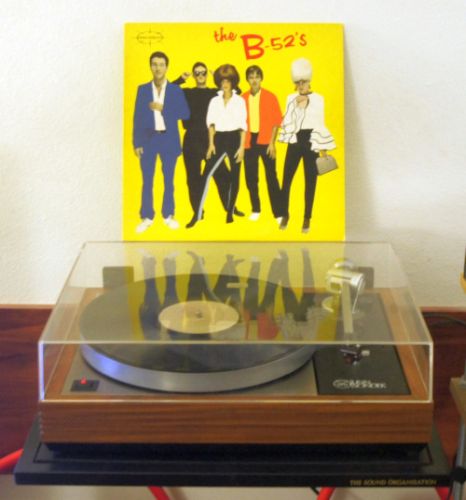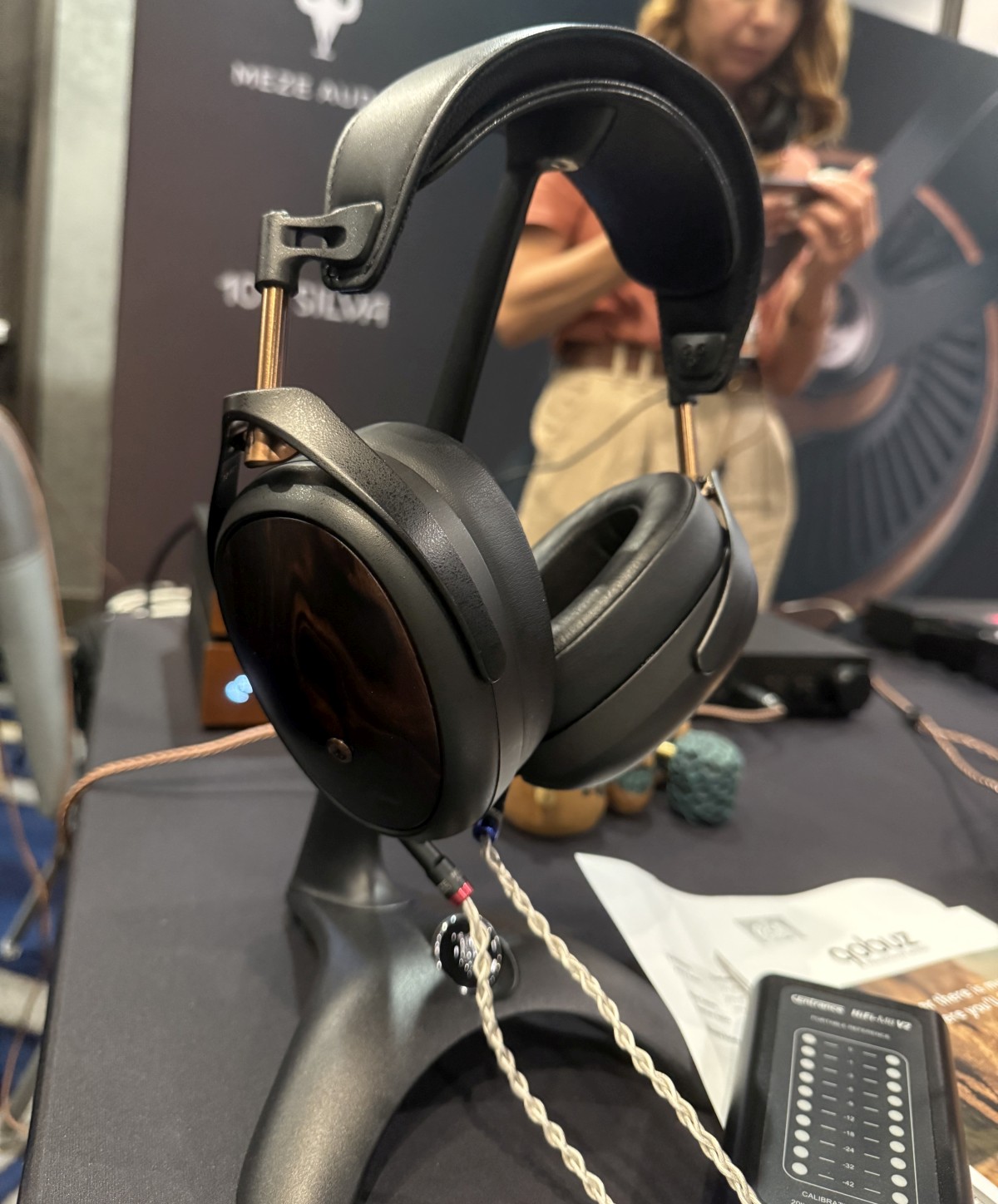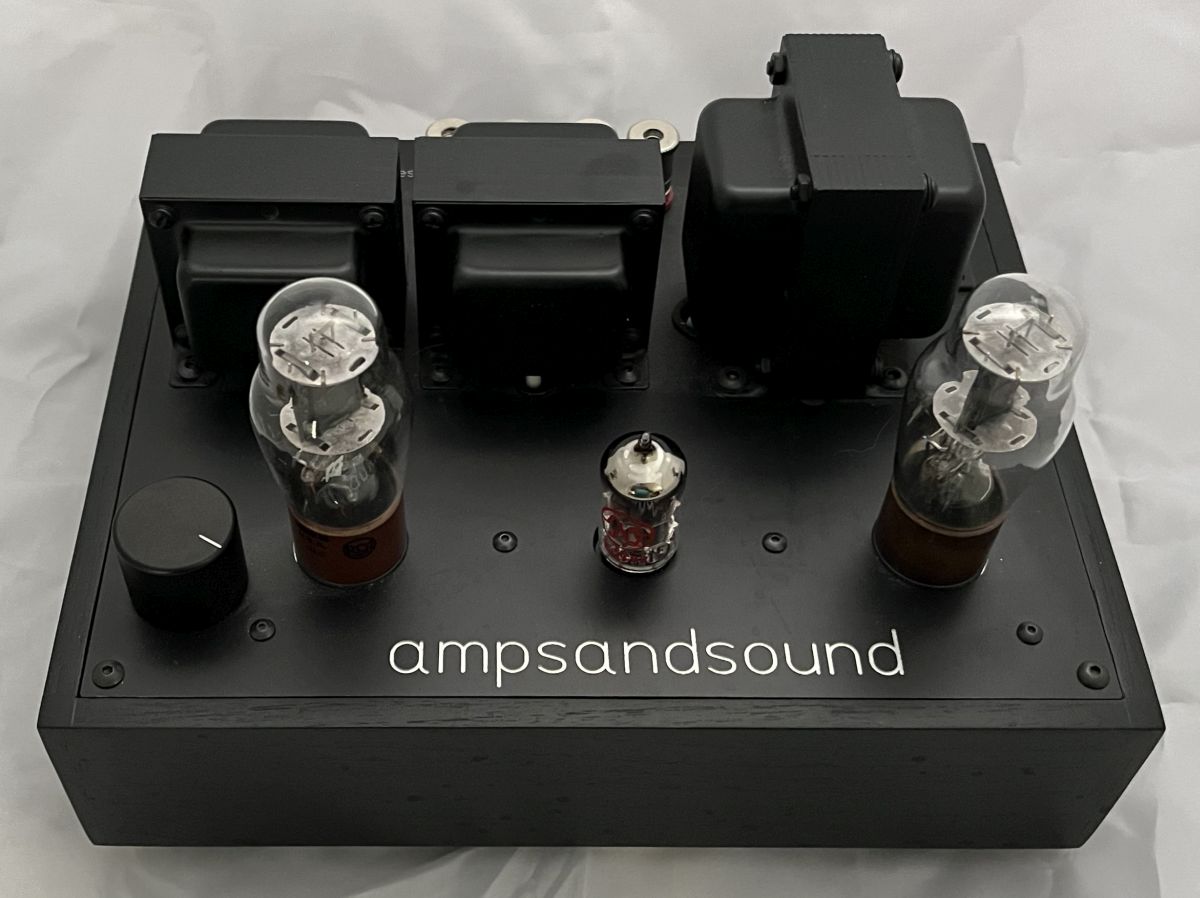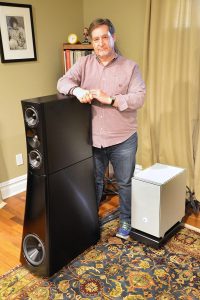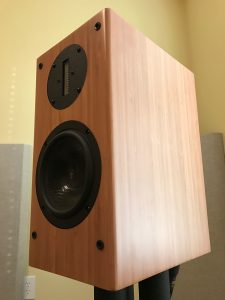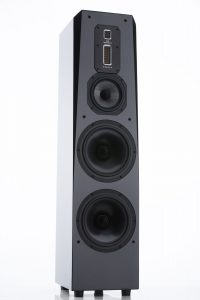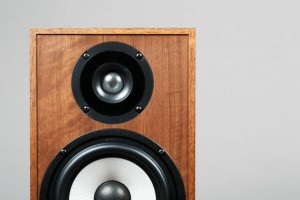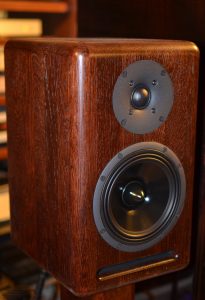This article by Steve Lefkowicz originally ran in Positive Feedback's ISSUE 60 March/April 2012, so while we call this section "New Old Stock - Articles from Our Days in Print" you are also going to see some articles from our early days of going online.
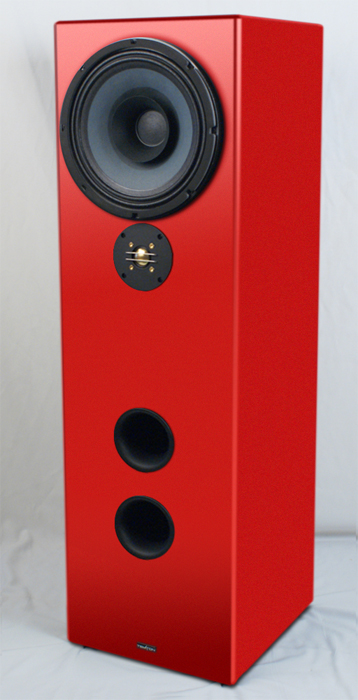
This might be a little longer than normal introduction. Those of us who write reviews on audio equipment have to deal with a lot of things that can affect our opinions and conclusions. One thing is the perception, according to some people on various Internet discussion groups that positive reviews are somehow suspect or indicative of some quid pro quo towards manufacturers that advertise in their publication, or to ensure companies will continue to supply equipment to review. Those same people seem to feel that negative reviews are somehow more honest, more accurate, or otherwise more believable. They look for negative reviews to somehow add credibility to a reviewer's status. I can't speak for anyone else, but for me, in close to twenty-five years of being involved in the review process, I just don't buy it.
Maybe I've just been lucky, but at both Listener Magazine, working for Art Dudley, and here at PF under the direction of the two Daves(1) (Clark and Robinson) my articles and the relative positive or negative tone of them has never been questioned. I will admit I have written far more positive than negative reviews over the years, but there's a pretty good reason for that… I've always been given the freedom to select the products I review.
That makes a big difference because I try hard to search out interesting and exciting products that fit the criteria I'm interested in most. First, though I could easily ask for the killer, super expensive, dream gear that many of you probably assume we all want, I don't. I have always had a consistent, some might say bizarre, fascination for low to moderately priced gear. I really don't care to review a $10,000 amplifier or a $50,000 speaker. I don't want audio gear that costs more than my car, or my house, for that matter. Also, brand names or famous designers do not generally impress me. For many audiophiles, mention of certain brand names brings out the oohs, ahhs, and lustful comments (brands like Wilson, MBL and recently, YG or Magico come to mind), but for whatever reason, it doesn't do anything for me. Sure there are some brands that I admire, based on my experience and their long term ability to build and sell good equipment. Brands like E.A.R, Von Scheiweikert, Magnepan, Antique Sound Labs, Spendor, Rogue Audio, and VMPS are a few that I hold in high regard, though I can't say I lust after anything they make, so I wouldn't change my lifestyle just to own one of their products.
However, I do love finding gear that is relatively unknown, or from some small company that is trying something different. I also love finding low or moderately priced gear that plays well and competes with more expensive products. So, when I go looking for gear to review, I hit the trade shows, stop at audio shops wherever I travel, and sometimes get recommendations from friends and people whose opinions I trust.
In other words, I've done some homework in advance and tried to find good products to review. If my preparation and advance work were any good, I would expect a majority of my reviews to be about reasonably decent products that receive at least pretty positive reviews.
However, I have had some fairly negative reviews published too. I have run into products that just didn't satisfy, or had glaring flaws, or otherwise just weren't very good. What happened in those cases? How did my prep work fail? Well, to be honest, it didn't. Looking back over the years, the negative reviews I've written have all been about products that I had either never heard before, or heard under conditions that really didn't give me an opportunity to get a handle on their sound and general quality before requesting them. Some of the worst products I've had in for review came at the request or recommendation, not from friends or trusted acquaintances, but from people I didn't know who emailed me or contacted me through the internet.
So, over time, I've tended to avoid taking recommendations from people I didn't know about products I've never heard.
However, as part of my current quest to find decent quality speaker systems that can qualify as fairly full range (bass response into the 30 to 40Hz range) and sell for around the $1000 mark or less, I tried something I wasn't really sure would work. I posted the question on AudioEvo.org, and let fellow Evoites make suggestions. Though several responses came back not understanding the question, and suggested buying used gear, a few people did make reasonable suggestions. One suggestion in particular, was for the Tekton M-Lore ($649/pair) that seemed very interesting. I had never heard of Tekton Design, but their speakers all seemed fairly high efficiency and based on a different outlook than typical run-of-the-mill speakers. After checking their website, published specs, and prices, I decided to request their slightly more expensive Lore model ($999/pair) for review.
The Lore certainly comes across as different from the typical $1000 audiophile speaker. First, whereas most lower priced high quality speakers tend to be small stand mounted "monitors," the Lore is a fairly good-sized floor standing speaker, measuring in at 39 inches tall by 12 inches wide and 13 inches deep and weighs in at a fairly hefty 55 pounds. And though it doesn't have that glossy, high-tech, construction and finish of most expensive "high end" speakers, it does have a well-built, purposeful appearance. If one were to accuse it of having somewhat of a hint of a DIY appearance to it, at least it could be said that whoever built it knew what they were doing and finished it quite nicely.
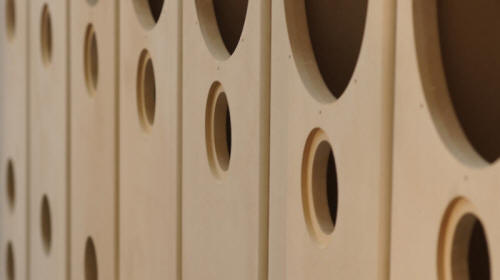
A closer look shows some very interesting ideas. The front face (no grill cloth or cover is supplied) is dominated by a ten-inch driver with a large whizzer cone, an Audax Gold tweeter, and two good-sized ports stacked vertically. At CES recently, I saw a few speakers with five figure price tags using that same Audax Gold tweeter, and in fact, that tweeter retails for over $100 apiece.
The main ten-inch driver however, is the part that doesn't just dominate the visual appearance, but the overall technical design of the speaker, as well as its sound. The Eminence Legend B102(2) is specified for use as a bass guitar driver, and not intended for use in home HiFi applications. I found these drivers available for about $95 each retail. Amazing that for a $999 pair of speakers, you are starting off with about $400 worth of drivers.
There is a nice, single pair of individual binding posts near the bottom on the backside, which though is too widely spaced for dual-banana plugs, fortunately offers plenty of clearance for whatever type or size of speaker cable you choose to use. They also come with pointy cones (rather than just spikes) that screw into ¼ x 20 inserts; four per speaker.
I'd also like to point out that they come very well packed. One nice thing is that the box is actually split halfway up, in two equal halves. To unpack a set of these, you slit the tape separating the upper and lower halves, slide the top half off, remove a few pieces of packing foam, lay the rest down on its side, slide the bottom half off, and you're done. Way quicker and easier than most other larger speaker systems I've had shipped to me over the years. Packing and unpacking for this speaker is important, since mishandling during either operation can damage the otherwise unprotected drivers.
When these first arrived, I hooked them in place of my Direct Acoustics Silent Speakers, which have been my favorite speaker in their price range for several years now ($511 when I got them, $749 now in Mk 2 release). To give the Lores some break in time, I drove them with the Adcom GFA 535 (65-watt) amplifier I've been borrowing from Dave Clark. The rest of the system was a Marantz SA8001 SACD player as primary source, PS Audio 4h preamp, and accessories as listed in the sidebar. Interconnects were Nordost Solar Wind, and for speaker cables I started with very inexpensive Radio Shack 14-Gauge Flat Megacable® Wire. After a while, I switched back to my long time standard, Nordost Solar Wind speaker cable, and found much improvement across the board.
I decided to let the system run for a couple of weeks to break everything in while playing with positioning. My room is 12.5 deep and 23 feet wide, though I only use the area extending 14 feet from one wall (an asymmetrical setup). The wall nearest the system opens into a 4.5-foot by 4.5-foot hallway leading to the front door. The speakers go along the long wall and face across the room. After much trial and error, I ended up with the speakers 11 feet apart, and surprisingly close to the wall, about 10 inches measured from the middle of the rear panel. Again, after much playing with toe-in I felt the best overall results were with the speakers facing directly at the prime seating position in an almost, but not exactly, equilateral triangle.
During the warm up period, I obviously did a lot of listening, though I tried not to commit to any firm opinions. However, I was pretty quickly taken by the very natural, very dynamic sounds I was getting. In fact, by the time I felt they were fully broken in, maybe after fifty hours of use, I had started to think that these speakers were really something very special.
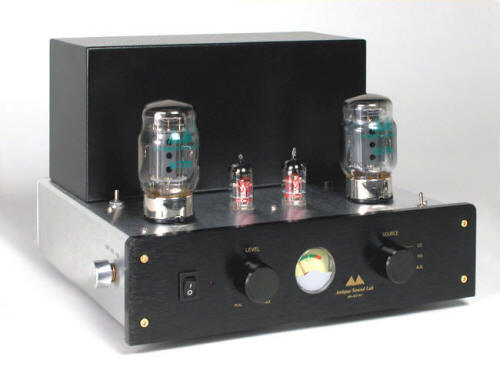
Then, I made two changes in my system. First, I got my trusty old Antique Sound Labs MG-SI15 DT-S, 15-watt KT88 amp out of storage. I haven't been using it lately because the Direct Acoustics Speakers simply work best with higher-powered solid-state amps. However, in spite of its low price, the ASL amp is an absolutely wonderful sounding amp when mated with the appropriate speakers. I have used it extensively over the past 11 or 12 years to drive everything from Sound Dynamics 300tis, VMPS 626, Reynaud Evolution 3 (all full range) to the midrange/tweeter ribbons in VMPS RM2neo speakers, and just about every other speaker I've had in house for review in that time. With the Tekton Lore being listed as 98 dB 1W @ 1M and an 8 Ohm load, it seemed an ideal match for the ASL amp.
The second change was getting the Rogue Audio Perseus Magnum preamp in for review. Though I've used the PS Audio 4H in my system since 1984, I've tried several good quality preamps/line stages over the past several years. I know and understand the limitations of the PS Audio, and have learned to listen around them. However, and I'll expand on this when I publish the review on the Perseus, having this preamp made a big difference in my evaluation and opinion of the Lore speakers. Keep in mind that probably 90% on my listening for this review was done with the Perseus preamp and the MG-SI15 DT-S(3) amp.
Having finally said all that, I suppose it's time to start discussing how these speakers sound and play music. I've certainly listened to them long enough now, with a wide enough variety of music, to render my opinion. But first, I'd like to make a few comments about music and how our audio systems might influence our musical choices.
I have fairly eclectic and broad taste in music. I listen to almost all genres and sub-genres of music, including (in broad terms) rock, classical, jazz, soundtracks, country (both traditional and modern), easy listening, world, electronic, and most anything else I can find. About the only forms I don't listen to on a regular basis are modern hip-hop, rap, and most forms of metal. This is important to understand because my system has to be able to play all types of music. It needs to be able to handle the scale and power of a full orchestra or a highly energized rock band. It has to handle the subtlety of a string quartet or single vocalist with guitar. It has to handle a proper bass line, whether it's John Entwistle, Charles Mingus, or the electronically produced bass of Propellorheads or Skrillex. It has to portray the beauty and intent of the music I choose to listen to, regardless of what that might be at the time.
And that's the rub. I won't give up music I like because the recording isn't "audiophile quality" or isn't otherwise exceptionally good. I buy records and CDs because they possess music I like and want to hear, never just because they "sound good." I haven't bought an "audiophile" record since wasting money on either Reference Recordings Dafos or Sheffield Labs' Russian recording of The Firebird in the 1980s (whichever I bought last, I don't remember). The few audiophile CDs I have were given to me for various reasons. I have Patricia Barber's Companion, but only because years ago a speaker manufacturer sent it to me to "help in setting up the speakers to make sure the bass was optimized." Strange, but I didn't care much for those speakers no matter what I did with them.
What does all this have to do with the review at hand here? Well, the best systems I've heard, the ones I've wanted to live with, and how I've viewed systems over the years, were the ones that made all my music more enjoyable to listen to. That doesn't mean they were colored in sound, or masked flaws in the recording, or somehow distorted the playback into something euphonically pleasing. It's just that some systems portray recordings in a fashion that lets you listen past the flaws of the recording to get at the heart of the music. It's not common, and many very expensive, highly tuned audiophile systems fail miserably at this. Those that get it right are something to treasure and enjoy.
In other words, I won't tolerate my audio system determining what music I listen to, but rather, let the music I listen to determine my audio system. I've been doing that for close to forty years.
So, finally getting to the Tekton Lore speakers, these fairly large, relatively inexpensive speakers using bass guitar drivers and unspecified "fairly simple" crossovers, what am I going to write? Why did these speakers warrant such a long intro?
Here's why. With the exception of a few caveats that I'll cover a little later, these speakers are game changers that set new standards for what can be expected in world of "affordable" high end audio (4). Looking back over the past fifteen years, the only sub-$1000 speakers that I would say can compete with these overall would be two that I happen to also own; the long discontinued Sound Dynamics 300ti and my current reference Direct Acoustics Silent Speakers… and maybe the Magneplaner MMG. However, in most regards, I find the Tekton Lore to be superior to these other speakers in significant ways.
I think one factor that has me so enthralled by the Lore is its high efficiency design. I was surprised when getting a little information from designer Eric Alexander about the speakers, that his favorite amps are all "massive wattage" designs. I took the high efficiency as an opportunity to use my much beloved 15-watt Antique Sound Labs KT88 amplifier. This was a wonderful match and supplied more than enough power and bass control to deliver at any listening level I cared to choose. However, unlike other high efficiency speakers I've tried in the past that only sounded their best with tube amps, these also sounded remarkable with the Adcom solid-state amp. What the high efficiency design seemed to offer, more so than low powered tube compatibility, was increased expressiveness in dynamics. That was what initially just caught my attention and kept shining through.
I know in all my reviews I seem to spend more time on dynamics and frequency response than on imaging and sound staging, but that's because those are two things that are part of real music. Real music is dynamic, both on a large scale and in the subtleties. Few inexpensive speakers have the capability to either play loudly enough, or to portray the speed and gradations of lifelike dynamics. The best systems I've heard at this have either been large very high efficiency expensive horn loaded designs; like Lowthers or Avant-Gardes' driven by low powered tube amps; or very large expensive conventional dynamic speakers powered by massively powerful amplifiers. Even getting into the $3000 to $5000 range that marks the upper limit of what I choose to review, most speakers I've tried simply seem to compress or downplay the liveliness and expressiveness where music requires superior dynamic range capabilities.
Over the last dozen years or so, I'd have to look to the VMPS RM2 or the discontinued Reynaud Evolution 3 (either about three to four times the price of the Lore) to think of a speaker that I've actually tried myself that had more top to bottom dynamic capability.
Next, looking at frequency range and extension, the Lore is remarkably extended and pure in both high and low frequencies. Again, using a bass guitar driver one would expect not just good low frequency extension, but also proper tone, speed and definition… and expectations are not just met, but exceeded by a large margin. In room tests with the Stereophile Test CD 2, even the 32Hz test tone was powerful, clear, and well defined. More importantly, all manner of CDs and SACDs that I tried when checking out the bass response of the speakers, were all superbly rendered.
Which resulted in me pulling out tracks just to check out the bass lines; something I don't normally do. David Johansen and the Harry Smith's superb SACD from Chesky showed the acoustic bass to have very natural depth, weight, and tone. On Peter Gabriel's 4th album (SACD), tracks like "Lay Your Hands on Me" or "The Rhythm of the Heat" literally made items rattle on a shelf in the next room. I just had to crank up some Primus (Tales from the Punchbowl) just to hear Les Claypool go wild.
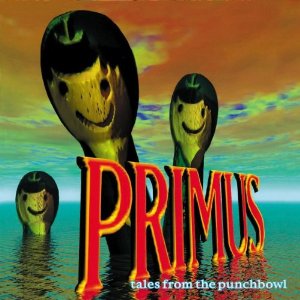
Surprisingly, the Direct Acoustics Silent Speakers still carry a little more weight and power on kick drums and electric bass, but the Lores certainly have better definition and tonality in the lower frequencies, as well as a more overall natural and realistic sound.
At the other end of the spectrum, the Audax Gold tweeter is certainly a fine driver, and as I mentioned, I have seen it on speakers with five-figure price tags. It has that sense of airiness and delicacy that differentiate better tweeters from run of the mill units. What was a little surprising was how well it integrated with the Eminence 10-inch driver. I have no idea what the crossover frequency is, or anything about the crossover other than it is "simple as possible" according to designer Eric Alexander. Overall, high frequency response is extended, smooth, fast, and finely detailed. Plus, these qualities are maintained whether you are playing quietly late at night, or cranking things up.
Getting more to the heart of these speakers, and their overall ability to play music, I have to say it's been a pleasure every day to have them in my system. Regardless of what I chose to listen to, everything was played back with a sense of excitement, vibrancy, and energy that made every track an event.

For example, The Lounge Lizards eponymous first album is a remarkable bit of high intensity art/punk/jazz performed by some of the New York scenes best musicians (circa 1980). Led by John Lurie on sax, with Evan Lurie on keyboards, Steve Piccolo on bass, the ever awesome Anton Fier on drums, and Arto Lindsey doing whatever it is he does with a guitar, and produced by Teo Macero, this album is a start to finish beat down of rhythms, attitude, and darkly vicious musicianship. I absolutely love this album. Though the recording is quite good, it has a darkly textured atmosphere that can be difficult to portray. When done well, this album is simply riveting to listen to; otherwise it can be a little too much and becomes quite tiresome. As heard through the Lores, not only didn't I want to stop listening, I didn't want to stop moving… and was practically sweating by the end of the CD. This was pure music making of the highest order (the LP sounds even better, but my records are temporarily in storage).
Then there is the sense of scale that these speakers bring to the show. One of the things that I like about the Direct Acoustics Silent Speaker is how they fill the room with appropriately sized sound rather than super specific imaging. Big instruments sound big, and big sounds sound really big. Well, the Lore does this one better, getting the scale and size right, while not sacrificing fairly precise imaging (width, height, and depth). They remind me very much of the better Lowther based systems I've heard in this regard; such as the Rethms and the Lammhorns. Quite remarkable, really, that they've managed to combine the dynamics, scale, and imaging of true high-end reproduction in a thousand dollar speaker.
And so it goes. Large scale classical was a delight, though I couldn't listen as much as I would have liked since about 95% of my classical collection is on LP and in storage. The few classical CDs and SACDs I had on hand were thoroughly satisfying. The Sony Classical SACD reissue of Stravinsky conducting the Columbia Symphony Orchestra in The Firebird Suite and Rite of Spring (my personal favorite performances of these pieces) exhibited all the intensity, tonal color and rhythmic drive that make these performances such standouts. The Mercury Living Presence CD reissue of Pictures at an Exhibition (Dorati conducting Minneapolis Symphony Orchestra) showed how well these speakers can portray the scale, size, and dimensionality of a large, well-recorded Orchestra.
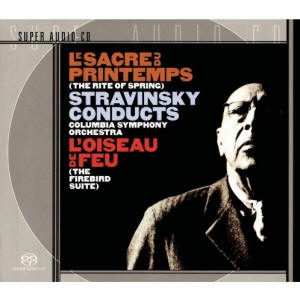
Looking at other musical choices, I found songs from Pentangle's Cruel Sister(5) to be extremely telling of the Lore's strengths. The intricate interplay between John Renbourn and Bert Jansch on guitar (or sitar) was clearly and vibrantly displayed. The distinct lack of rock/blues rhythms, and Terry Cox's masterful if subdued drumming (following the beat rather than keeping it) simply sounded right and made sense. Jaqui McShee's voice, not a strong voice like contemporaries Sandy Denny or Maddy Prior, was wistful, delicate, and absolutely spot on. And the bass master, Danny Thompson, sounded rich, natural, and as distinct in tone and style as I've ever heard him… even if this isn't the best recording of his playing available.
How much longer should I go on? Whatever style, genre, and level of complexity or musically challenging selection I played, I was constantly rewarded with a remarkable playback that drew me in and kept me there for as long as I had time to listen.
In direct comparison to my two long time references, I found interesting contrasts. The Sound Dynamics 300ti (an old budget recommendation by Harry Pearson of all things) are probably the most traditionally "audiophile" of the three. They are very detailed, and capable of quickly showing differences in any associated gear, with nicely delineated imaging. A slightly recessed midrange can make them sound a little thin on some music, though that can be played with via amplifier choices. They also possess a reasonably solid and tuneful bass down to the mid 30Hz range and an extremely detailed and airy high end. In spite of fairly average sensitivity specs, they sounded best with my Antique Sound Labs amplifier, and surprisingly so even in bass reproduction. Their biggest limitation was a sense of strain if played too loudly, and the fact that, though quite good in comparison to most sub-$1000 speakers, they aren't the most dynamically capable speakers out there. They took some of the edge and excitement away from music that needed more dynamic capabilities.
In contrast to that, the Direct Acoustics Silent Speakers offer a less traditional audiophile sound, but are more musically enticing than the Sound Dynamics. They are capable of tremendous bass power, punch, and a more even tonal balance. They can fill a room with a huge soundstage, if not possessing the most finely dimensional sense of image within that soundstage. They also lack the fine detail that both the Sound Dynamics and Tektons are capable of demonstrating. They do possess an incredible sense of musical wholeness and comfort that simply lets you get lost in a listening session. They might not be as good of a reviewer's tool as the sound Dynamics, but for daily listening and enjoyment, they are the better speaker. To my way of looking at this, their biggest limitation is a lack of detail, and the need to use higher powered solid-state amps to both generate their sense of dynamics and to control their bass response.
The Tekton Lore, on the other hand, exceeds both in overall dynamic capability and in their ability to simply play loudly without any sense of strain. What's more, though not quite as powerful as the Silent Speaker in the bass range of most string and electric bass instruments, it is far more natural than either of my other speakers in its tonality, tunefulness, and ability to capture the overall sense of realness throughout the bass range. As you move up in frequency, all instruments are given a wonderful, natural sense of scale, tonality, and clarity that also far exceeds the other speakers. Voices take on, not just all the standard accolades, but an almost eerie sense of aliveness that I usually associate with speakers that far exceed my target price range. They seem to combine the best of what my other speakers can do, and then improve even further.
Well, there you have it. If I weren't on a self-imposed no-stereo-equipment-purchases-until-my-son-graduates-from-college kick, I would probably be trying to convince my wife that we should keep them. Someday I'll have to review their $2500 Pendragon, which is like the Lore on steroids, with two 10-inch drivers and three tweeters in a much larger cabinet.
Tekton sells direct, with a 30-day money back guarantee. I'm guessing they don't get many sent back. Absolutely and highly recommended!
Lore Loudspeakers
$999/pair
Tekton
(1) I say "under the direction" somewhat bemusedly, as in all the years I've written for PFO, and Dave Clark's Audio Musings before that, about the only "direction" I've been given is to be asked let them know what I'm working on and to be reminded from time to time to actually turn my articles in for publication. Otherwise, they've been remarkably cool about letting me do my own thing.
(2) This does appear to be the same driver used in Zu speakers, though Zu does modify it, adding a large phase plug and maybe other changes.
(3) Please note that the Antique Sound Labs MG-SI15 DT-S is actually an integrated amp, using 12AX7 tubes in its line stage. However, I have always used it as a basic amplifier, feeding it with either the passive output of my PS Audio 4H or from an active line stage. I just leave the volume control on the MG-SI15 DT-S up all the way. I think it sounds better this way, and have discussed using it this way with both the amp's designer and importer.
(4) Before it gets pointed out that I haven't heard all the sub $1000 speakers on the market, first remember that any speaker that can't realistically and satisfactorily play down below 40Hz is off my list. Subwoofers are fine, but that's a separate category. I'm looking strictly at speakers that play full range or close to it, at this price.
(5) Yes, I know critics slammed Cruel Sister when it came out originally, but for some reason remains my favorite of all of Pentangle's releases.
A Quick Q&A with Eric Alexander of Tekton Design
Questions by Steve Lefkowicz
PF - Is Tekton an outgrowth or extension of some other business you are in? Is this now your full time, primary business? Or was it more an extension of audio as a hobby? How long have you at this?
EA - Tekton Design is my entire focus venture at the moment. I do this full-time (10-12 hours daily) and have done since 2005.
Here's a brief explanation from my eBay page: "My passion for audio and speaker building began at a very young age. My grandfather was a carpenter, and when I was 5 years old, he began offering me his wood scraps, along with a hammer and nails, for my experimentation. I got my first taste of electronics in the 6th grade, when my teacher at school let me put my creative energy into the exploration of all kinds of electronic gadgets. At that time, I also embarked on my music career, first learning to play the trumpet, and then transitioning to percussion instruments, which I still play today. My first official loudspeaker debut was at the age of 14, when I spent two solid days designing, building, and painting a pair of speakers for a neighborhood dance party. This was the same time that my hormones were kicking in, and so of course, my endeavors were mostly for impressing the girls. The bonus was the girls (and guys) were impressed, and the speakers really didn't sound half-bad! Obviously, speaker designing and building has been a life-long passion, and has turned into a great career for me."
I have had some type of audio related employment since 1986. I have worked for Kimber Kable, Diaural (based on my patents), Edge Audio (who became Aperion Audio), Soundtube Entertainment (the largest speaker manufacturer in Utah), and now Tekton Design. I have also contributed to many other significant engineering efforts as a consultant and have now have over 50 commercially available loudspeaker models to my credit. My 'Broadbeam' tweeter patent owned by SoundTube Entertainment has now likely sold into the $30 million range to date.
PF - What was your inspiration for designing speakers? Other brands you admire, or was it more a case of not finding what you wanted in the market already?
EA - I knew I wanted to design audio gear as an early teenager. Live music and I love audio. I am also a past engine builder and I owned a dragster in my early 20's. I literally extrapolated the passion for pushing the envelope forward through motorsport into my audio career. This brief video somewhat explains current design philosophy: http://www.youtube.com/watch?v=Vm6jHGQEmog
PF - It seems you have two distinct lines, one based on full range drivers and open baffles, and one based on pro audio drivers and vented boxes. How do you differentiate the two lines? Are they for distinctly different tastes?
EA - Tekton started out selling full-range products. I'm now moving into the phase of offering products I have great faith and personal confidence in.
PF - Looking specifically at the model Lore, I’m curious about your choice of the Eminence 10 inch driver. It is specified as a bass guitar driver, so how did you decide it was a good choice for high quality home audio in the first place? What led you in that direction?
EA - It was all based on need. I seek out the ideal transducer for my needs. In the past I had many transducers designed to my specs. Eminence has built custom parts for me in the past and I have confidence in their products. However, they are a pro audio manufacture so looks are the last thing on their radar—not too compatible with hi-fi regarding the stunning visuals.
PF - Looking at retail prices, between the Eminence 10 inch driver and the Audax Gold tweeter, it would seem that almost half the retail price of the Lore is in just the drivers. The cabinets seem quite nicely made, too, so how do you keep your retail price where it is?
EA - You are correct. Over the years in the industry I learned what worked and what didn't work, what I needed to do insure how to be profitable and stay in production in the early phase of this venture.
PF - All your speakers are very high efficiency. I’m guessing you are a fan of low powered tube amps? I’ve mostly been using a KT88 based amp with the Lore, which runs either 5-watts in triode or 15-watts in pentode mode. What are your favorite amps (or tubes) for your speakers?
EA - Actually, my favorite amps are massive wattage. You can never have too much power. However, I have a real soft spot and passion for tubes. So many of my guitar band mates were so passionate about tube amplification and I knew there must be something of substantial merit there. One of my favorite tube amplifiers is the Mesa Baron—long gone the way of the dodo bird now.
PFO - You seem to be flying under the radar a little bit. Any plans for increased presence in the market? Will you be attending Rocky Mountain Audio Fest or any other Hi-Fi shows in the future? Might we see you in California at T.H.E Show in Newport next summer?
EA - I cannot promise show attendance due to a young family. However, Yes! Tekton is planning big in the future. I have many things in the works here.




